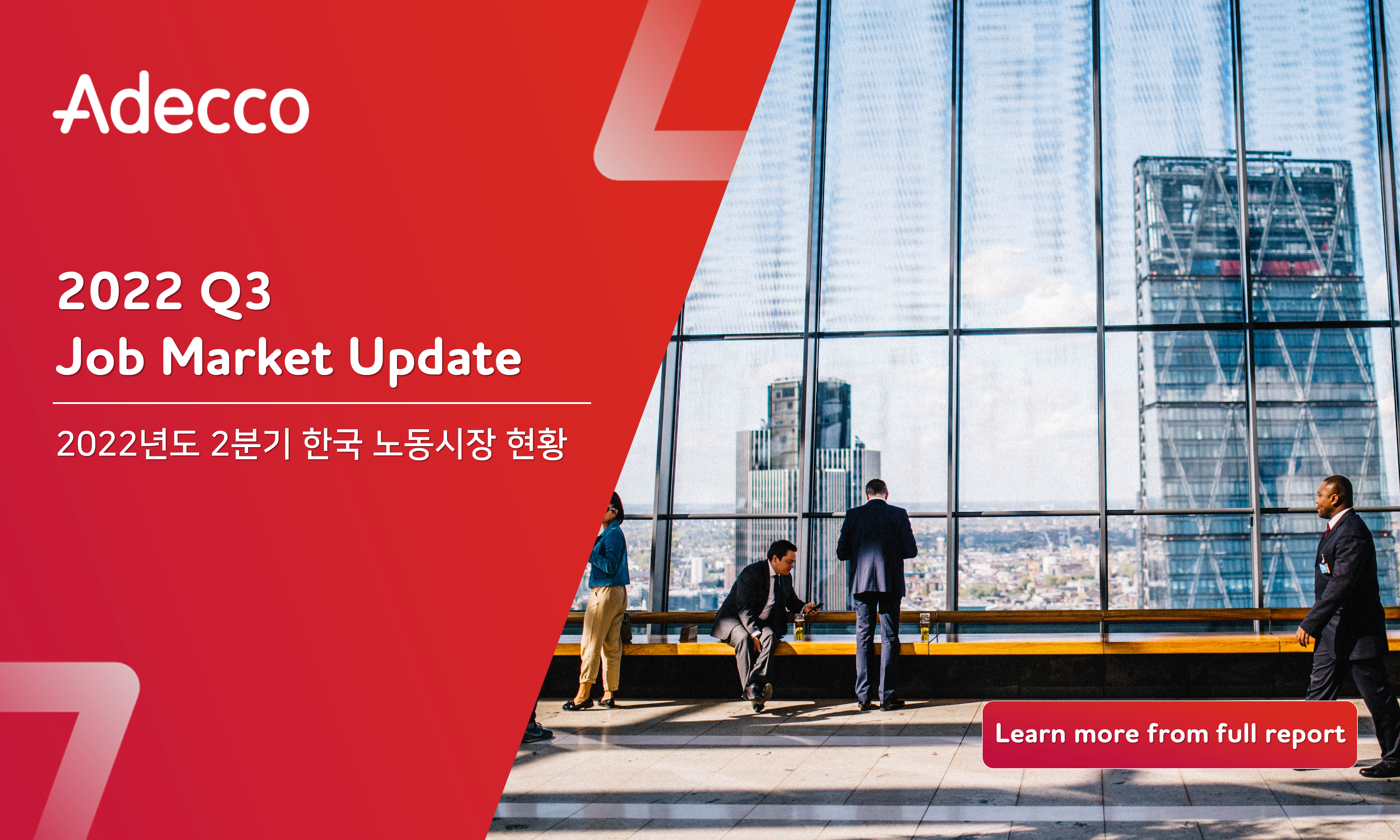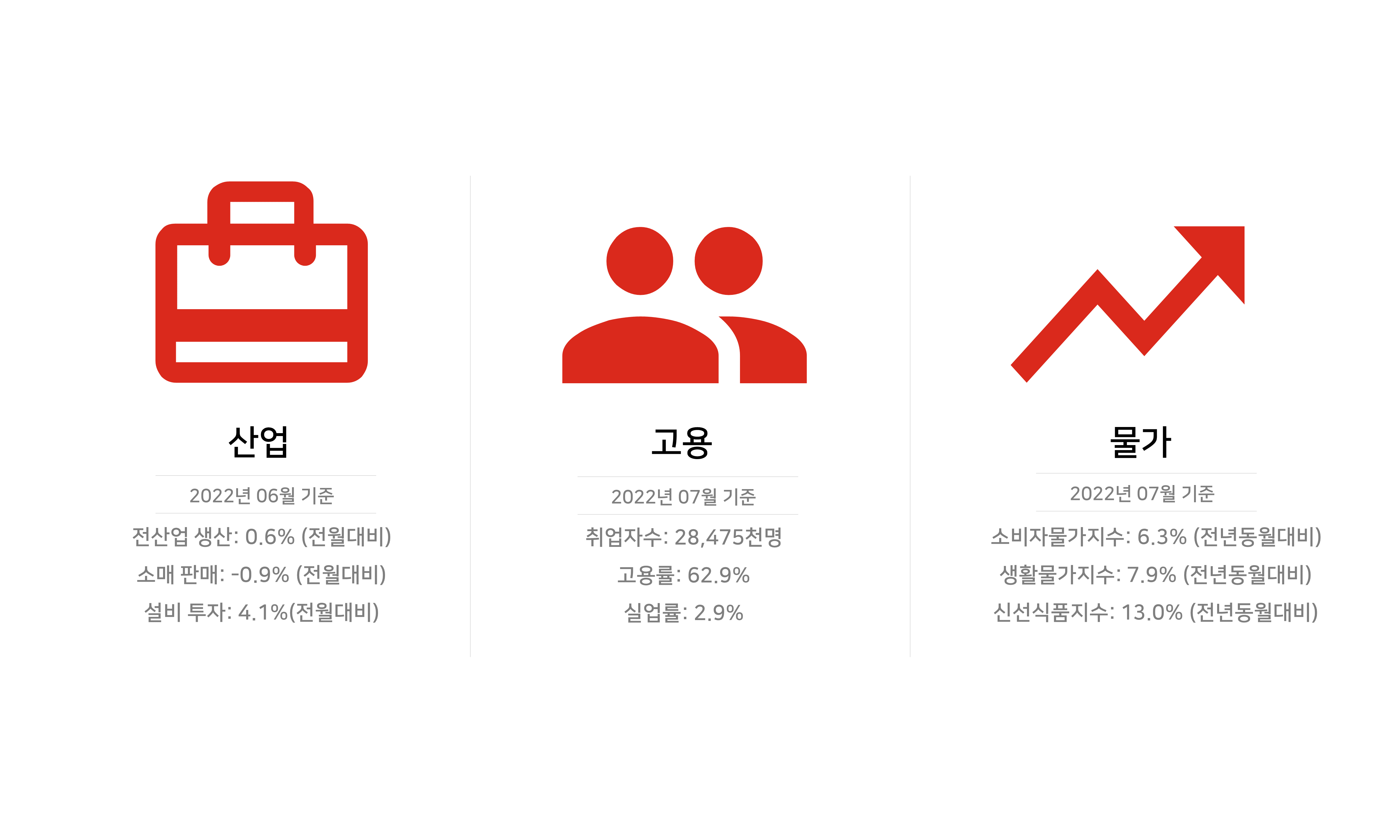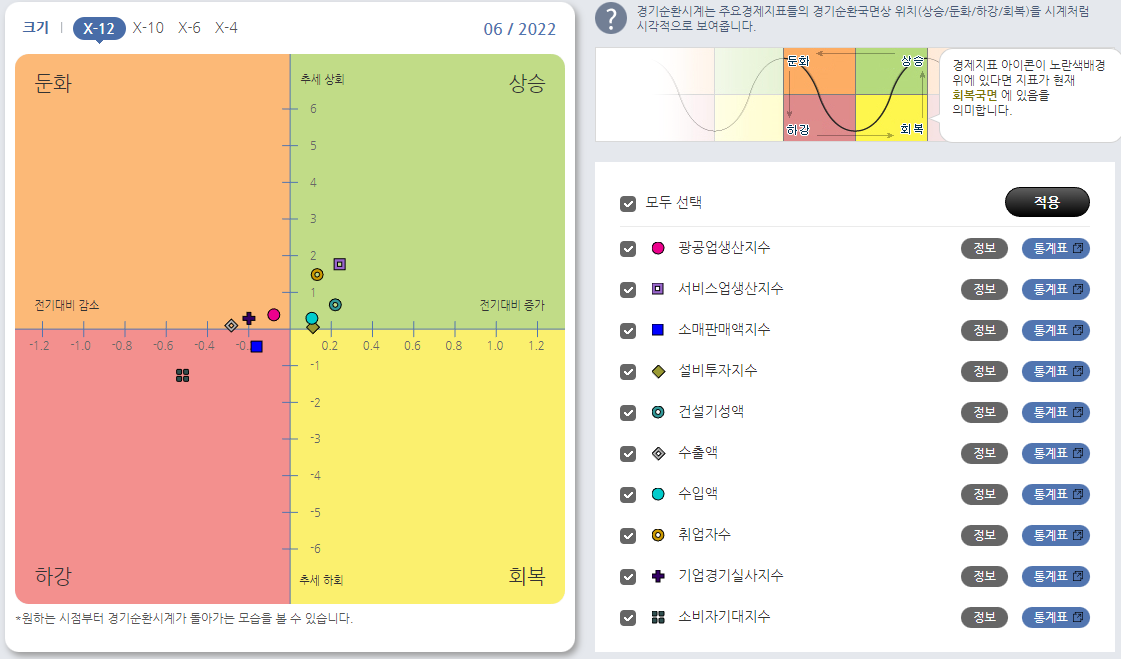[Job Market Update] 2022 Q3 ENG

 2022 - Q2 Job Market in South Korea
2022 - Q2 Job Market in South Korea
South Korea Labor Market Summary
South Korea has an export-oriented economy with services accounting for the highest percentage of GDP. According to the latest statistics from Korean Statistical Information Service [hereinafter referred to as KOSIS], as of June 2022, economically active population and labor force participation rate went up 2.2% and 1.2% year-on-year respectively. The country's Finance Ministry expects employment will climb by 600,000, more than double its previous estimate of 280,000, reflecting the dissipation of risks from COVID-19's omicron variant.
However, while South Korea has continued to see employment growth and increases in domestic demand, the economy is expected to expand this year at a slower pace than the government's previous forecast as central banks across the globe have homed in on inflation as the biggest threat to their economies. Consumer prices in South Korea rose 5.4% in May, the fastest pace since 2008, and they were expected to remain in the 5%-range throughout the second quarter.
Also in May, likely to be followed by more economy-stimulating initiatives of the new administration that won the keen presidential election held earlier in March, South Korea passed a record extra budget in what is likely to be the last round of such fiscal support to offset the economic impact of the pandemic, given escalating inflationary pressure is now the key challenge.
Overall, according to KOSIS, the business cycle clock in May shows that Services, Value of Construction Completed, Employed Persons are located in the expansion phase (green quadrant), while Industrial Production, Exports, Imports, Business Survey Index (BSI) are located in the slowdown phase (orange quadrant); and Retail Sales, Equipment Investment, Consumer Expectation Index are located in the recession phase (Red quadrant). In comparison with April, Services, Value of Construction Completed, Employed Persons are increased while Industrial Production, Retail Sales, Exports, Imports, BSI, and Consumer Expectation Index are decreased.

Reference: https://kosis.kr/visual/bcc/index/index.do?language=eng
Solid, Slowly Recovery Amid Challenges from Home and Abroad
In line with the economic indicators released, "South Korea's economy is experiencing a solid but slowly recovery amid several major risks," according to Bryan JP, Adecco's South Korea country manager. Bryan points out that with estimated GDP growth and unemployment rate both at about 3%, the country's recovery today is mainly driven by exports, which are very solid, thanks to the semiconductor industry as a key driver.
However, gas is seen as a factor that looms over export prospects. South Korea has recently cut down dramatically its purchase of Russian gas by turning to the US side and Middle East instead for supplies. The country will eventually halt Russian oil purchases as many companies look to avoid trade, logistical, legal, and financial complications that could affect corporate reputations. Nevertheless, the crisis is still putting pressure on fossil's energy globally and it may impact the international supply chain. Bryan stresses that as South Korea relies heavily on exports, it would then see transaction prices going up and export volumes going down, potentially slowing down the overall economy recovery pace.
"The second risk is more local," Bryan insightfully refers to a foreseeable problem from within the country -- demography. According to him, demographic transition is inevitably to emerge as another key game changer in shaping the country's economy landscape in the near future.
"It is not a risk for today, but if you look at the next three to 10 years, say 2025 and 2030, there will be a massive lack of active population in Korea, where birth rate is down." Bryan says that estimations for 2025 will see about 1 to 1.5 million active population short in South Korea and up to 3 to 3.5 million in 2030.
Another internal factor that might affect recovery or the country in general is a political one. Bryan observes from the recent presidential election result that the country was "cut in half," where there was a generational vote, a gender vote, and even a geographic vote. Bryan says that this is an internal recovery or challenge that Korea will be facing, not economically but between the old generation and the young one, but the trend now is to sustain the same.
Larry, head of the general staffing sector of Adecco's South Korean Office, also sees in the newly-elected Yoon [Suk-yeol] administration an influencer on investment, hence the economy, job market, and contingency workforces. As Larry points out, the new government's political alignment more toward the US side is going to play a role in the future deployment of the country's financial resources.
As for the ongoing pandemic, both Bryan and Larry admit they are not too concerned although it is still impacting the face-to-face business.
Industry Outlook for Job Seekers
Despite the challenges from home and abroad, there are industries still growing in South Korea. Bryan names semiconductor as a sweet spot, followed by the logistic market because of stellar e-commerce and supply chain, which is still operating quite well, while manufacturing is sustaining, although not booming. Bryan adds that construction has been up and down in June and government-related projects are going back up, but the new administration has only been in power for two months, so it is difficult to get the impact.
Commenting on what types of manpower demand are increasing or in decline, Bryan uses Adecco as a good thermometer because the company invests where the clients are asking it to recruit, and the teams that have been growing the fastest in the last two years in Adecco are its engineering team and anything related to semiconductor, power generation and the technology, AI, and smart industries. As for those facing decreasing demand, Bryan says the consumer market, hospitality and tourism industry, and anything related to airport have been struggling because of no tourists, although he expects a recovery. Larry witnesses some big decrease in the outsourcing volume, specifically in the banking sector because of the pandemic. However, as the country welcomes more and more tourists with open borders, he finds it hopeful that face-to-face sales promoters will increase over time.
From the perspective of staffing professionals, both Bryan and Larry advise that job seekers should prepare themselves not just as a generalist, but more as a specialist. That means that some IT engineers need to hone up their skill set for special requirements and that people, currently employed or not, need to develop themselves and make need-driven changes through various channels such as trainings or academies, or even for a upskilling within the company. Larry also notices a trend that many companies are rather hiring the executives and core employees, and then outsourcing those who are non-core. For job seekers, it may mean contractors are becoming a more common option than full-time positions.
Looking forward to the third quarter, Bryan says that he does not expect a dramatic change in term of trend or which industries. The only element that would make a big difference is government projects, so it would be where the government decide to invest in the state-driven sector.